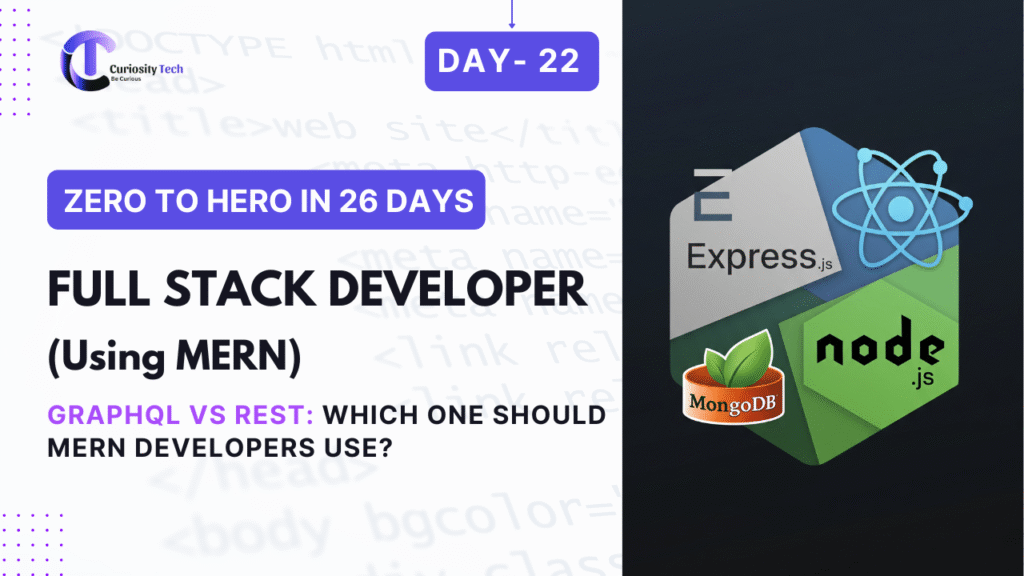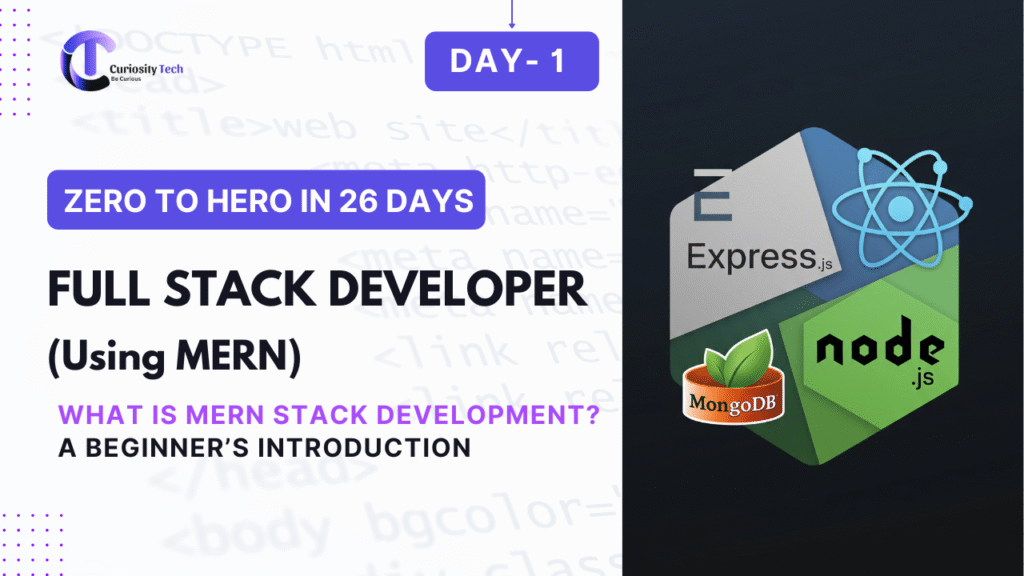Introduction
API architecture is a critical decision in MERN Stack development. Traditional REST APIs have been the standard, but GraphQL has emerged as a modern alternative. Understanding the strengths, limitations, and use cases of both is essential for building scalable and efficient applications.
CuriosityTech.in emphasizes practical comparison and implementation, helping MERN developers make informed choices while building full-stack applications.
Step 1: Overview of REST

- Architecture: Resource-based; each endpoint represents a resource.
- Data Fetching: Fixed responses, often leading to over-fetching or under-fetching.
- HTTP Methods: GET, POST, PUT, DELETE for CRUD operations.
Example – REST Endpoint:
GET /users → returns all users
GET /users/123 → returns user with ID 123
POST /users → create new user
Advantages:
- Simple, well-established, easy to cache
- Works with HTTP standards
- Large ecosystem and community support
Limitations:
- Over-fetching or under-fetching data
- Multiple endpoints required for complex queries
- Hard to evolve without versioning
Step 2: Overview of GraphQL
- Architecture: Query-based; single endpoint to fetch exactly the data needed.
- Data Fetching: Clients specify fields they need, eliminating over-fetching.
- Single Endpoint: /graphql handles all queries and mutations.
Example – GraphQL Query:
query {
user(id: “123”) {
name
posts {
title
likes
}
}
}
Advantages:
- Fetch exactly what you need in one request
- Strongly typed schema for predictable responses
- Easier evolution of APIs without versioning
Limitations:
- Learning curve is steeper
- Caching and rate-limiting are more complex
- Requires setup for backend schema and resolvers
Step 3: Comparing REST vs GraphQL
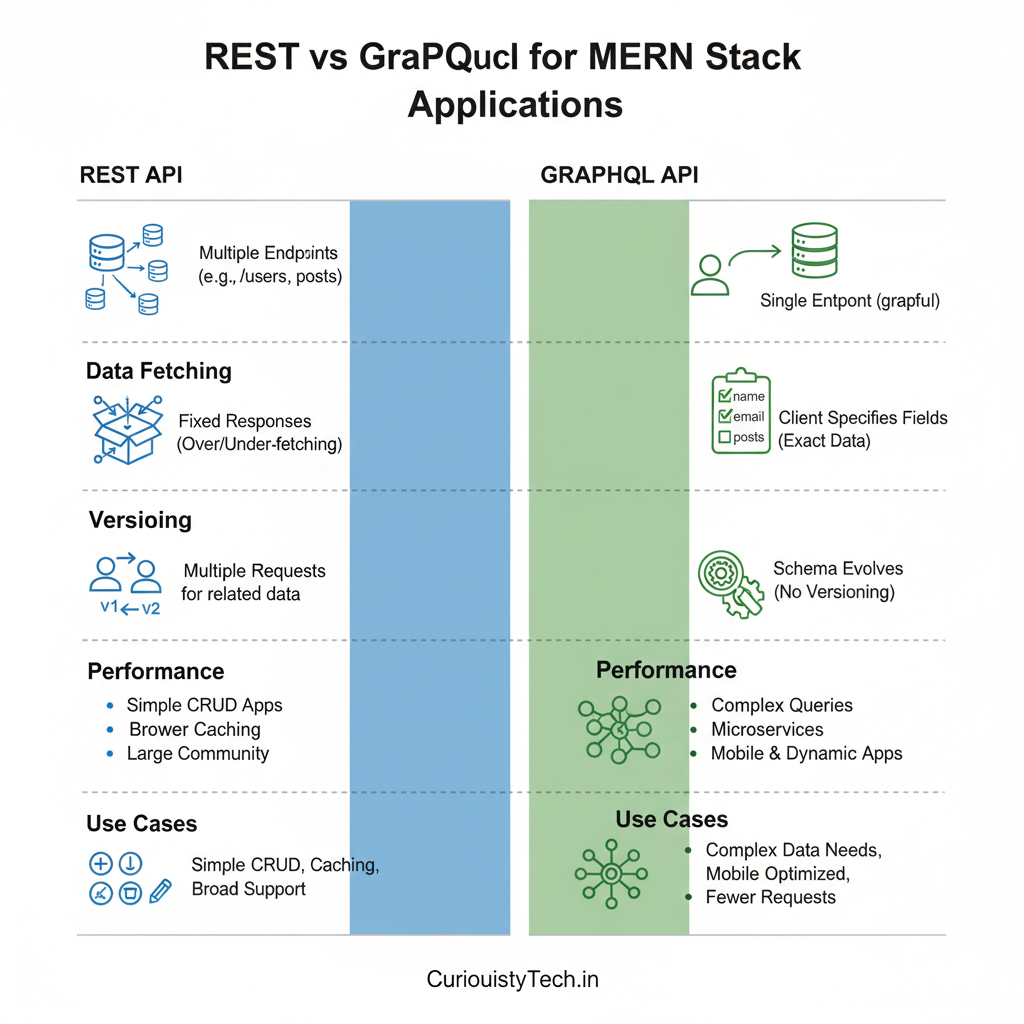
| Feature | REST | GraphQL |
| Endpoints | Multiple endpoints per resource | Single endpoint |
| Data Fetching | Fixed responses; can over/under fetch | Client specifies fields; flexible |
| Versioning | Requires versioning for changes | Schema evolves; no versioning needed |
| Performance | Multiple requests for related data | Single request; avoids over-fetching |
| Learning Curve | Low | Moderate to high |
| Tooling & Ecosystem | Mature and widely supported | Growing ecosystem; tools like Apollo |
Diagram – REST vs GraphQL Data Flow:
REST: Client → GET /users → GET /users/123 → GET /posts → Server
GraphQL: Client → POST /graphql (query all needed data) → Server resolves efficiently
Step 4: Choosing the Right API for MERN Apps
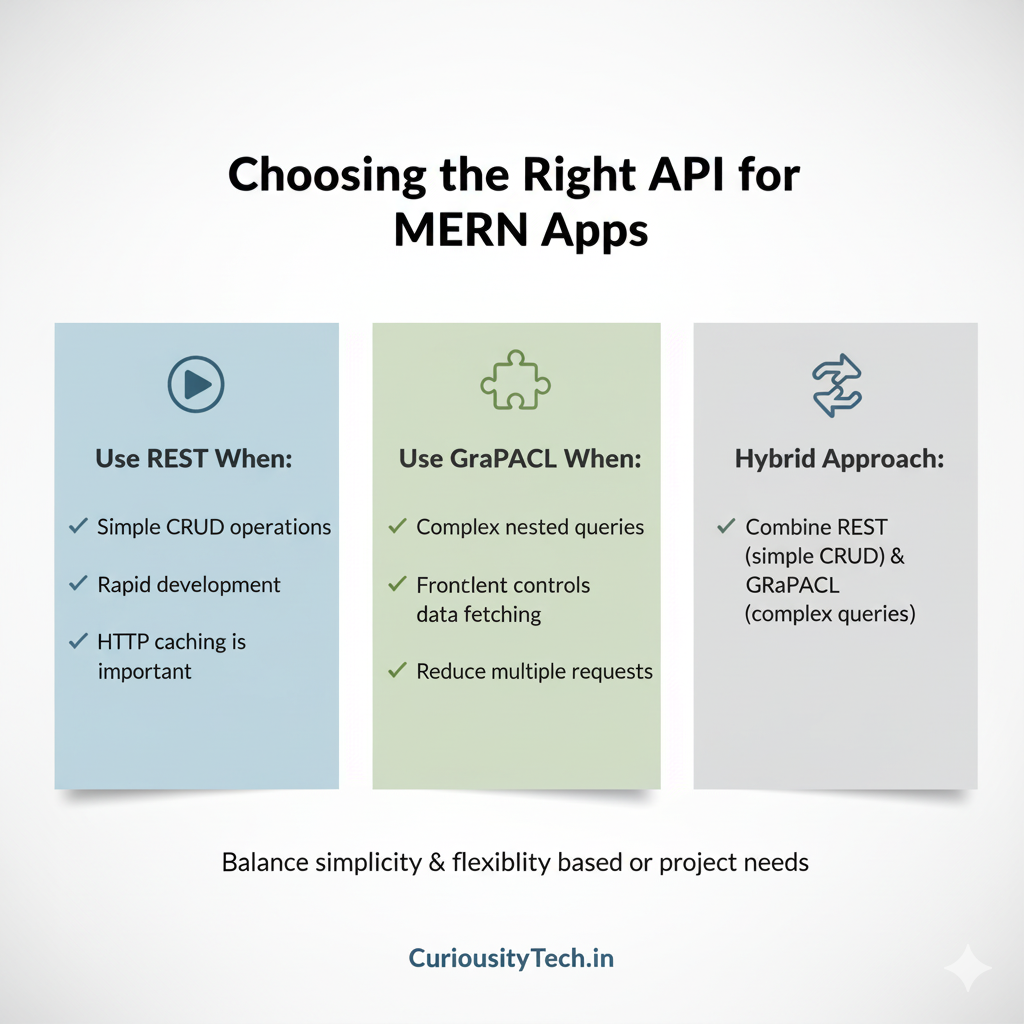
- Use REST when:
- Building simple applications with standard CRUD operations
- Familiarity and rapid development are priorities
- Caching and HTTP simplicity are important
- Building simple applications with standard CRUD operations
- Use GraphQL when:
- Applications require complex queries with multiple nested relationships
- Frontend needs to control data fetching dynamically
- Performance optimization by reducing multiple requests is needed
- Applications require complex queries with multiple nested relationships
- Hybrid Approach:
- Some MERN projects combine REST for simple CRUD and GraphQL for complex queries, balancing simplicity and flexibility.
- Some MERN projects combine REST for simple CRUD and GraphQL for complex queries, balancing simplicity and flexibility.
Step 5: Best Practices for MERN Developers
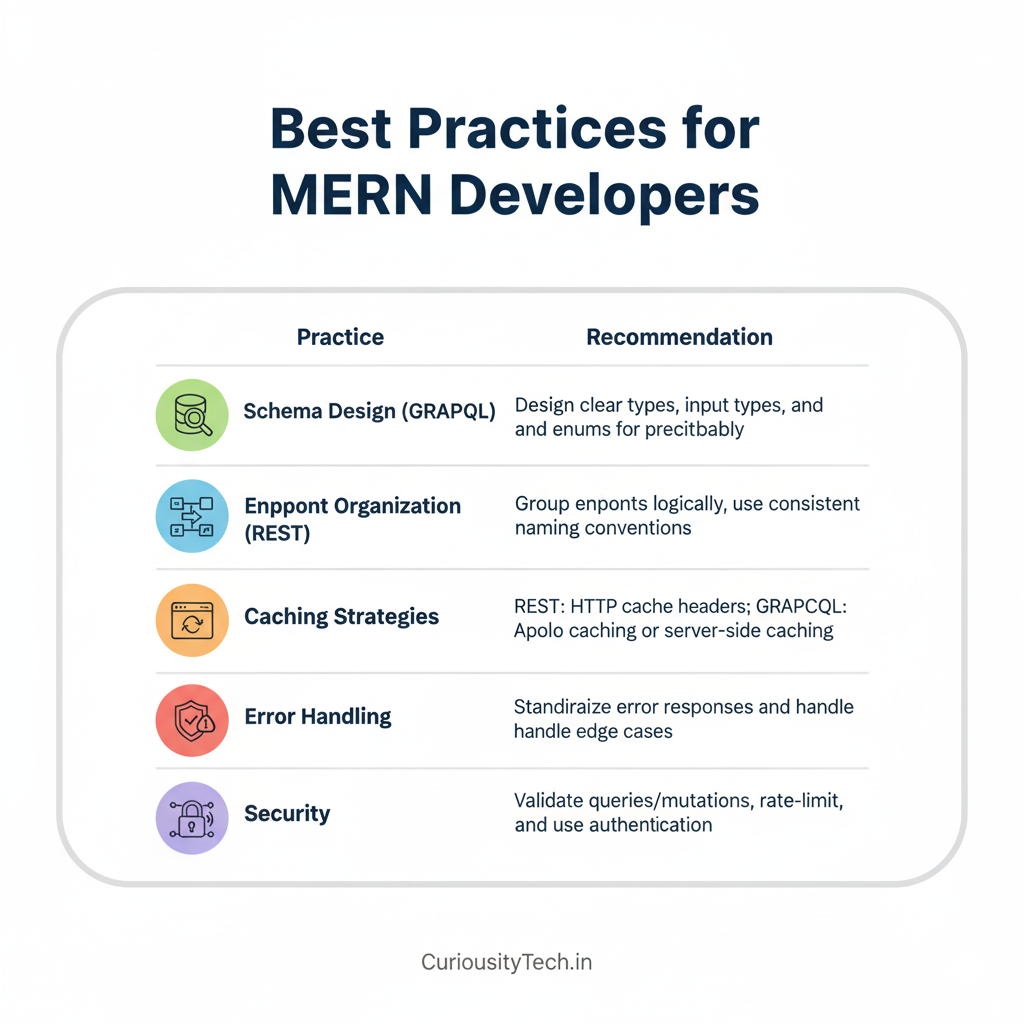
| Practice | Recommendation |
| Schema Design (GraphQL) | Design clear types, input types, and enums for predictability |
| Endpoint Organization (REST) | Group endpoints logically, use consistent naming conventions |
| Caching Strategies | REST: HTTP cache headers; GraphQL: Apollo caching or server-side caching |
| Error Handling | Standardize error responses and handle edge cases |
| Security | Validate queries/mutations, rate-limit, and use authentication |
Step 6: Becoming an Expert in MERN API Design
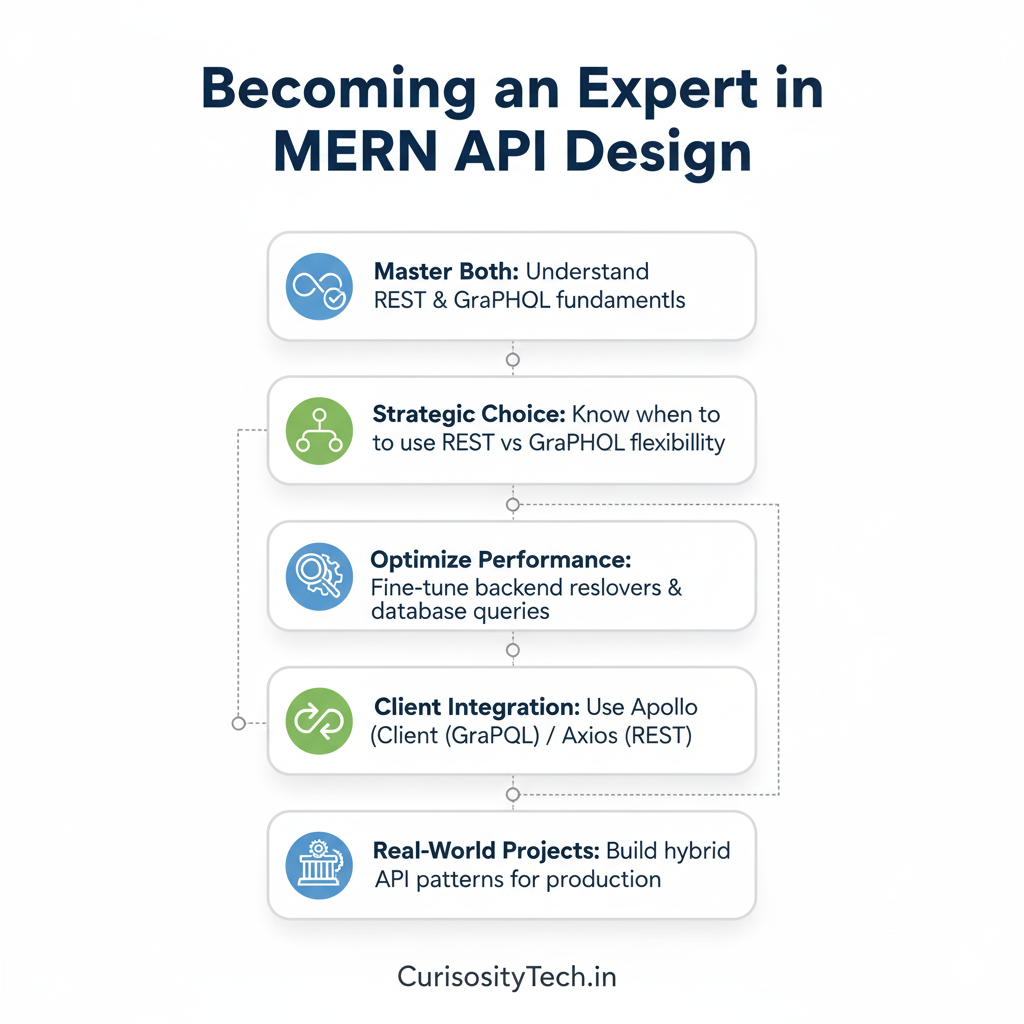
- Understand both REST and GraphQL fundamentals.
- Know when to opt for REST simplicity versus GraphQL flexibility.
- Optimize backend resolvers, database queries, and performance.
- Integrate Apollo Client in React for GraphQL or Axios/Fetch for REST.
- Build real-world MERN apps with hybrid API patterns for production readiness.
CuriosityTech.in provides guided projects where learners implement both REST and GraphQL APIs, compare performance, and apply best practices for real-world MERN applications.
Infographic Suggestion
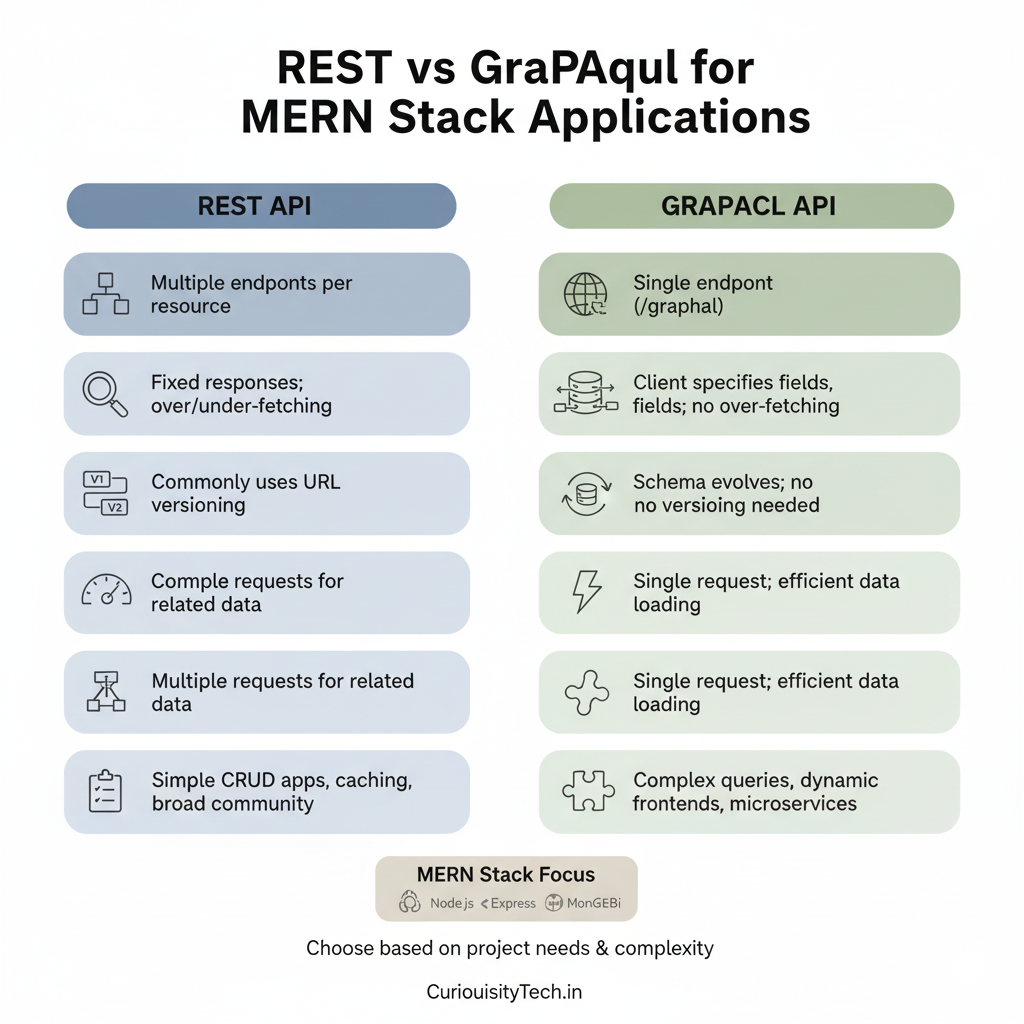
Title: “REST vs GraphQL for MERN Stack Applications”
- Sections: Endpoints, Data Fetching, Versioning, Performance, Use Cases
- Description: Visualizes differences, advantages, and scenarios for choosing REST or GraphQL in full-stack MERN apps.
Conclusion
Choosing between REST and GraphQL depends on application complexity, performance needs, and team familiarity. MERN developers benefit from understanding both approaches to build scalable, efficient, and maintainable applications. CuriosityTech.in offers hands-on projects demonstrating REST and GraphQL integration, preparing developers for professional full-stack careers.

